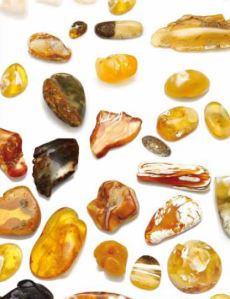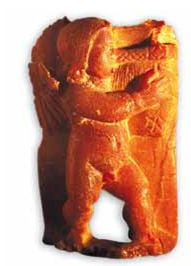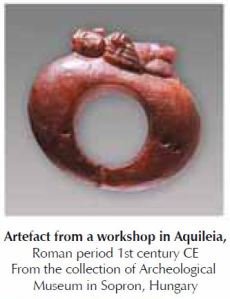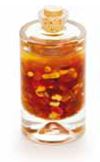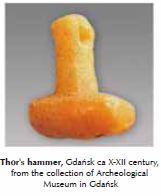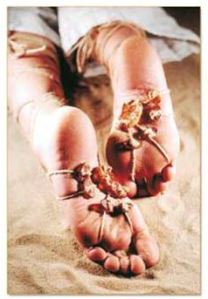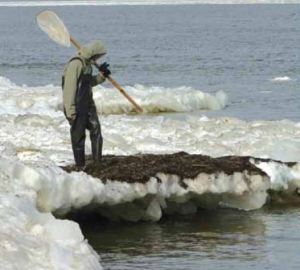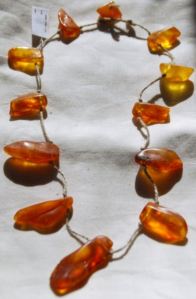HAPPY HOMOEOPATHY DR.FATEMA PALGHARWALA. WELCOMES YOU TO A CORE OF KNOWLEDGE!! tweet @ffspp email : dr.fatemapalgharwala@gmail.com Call : 09762688352 www.happyhomeopathy.com
Popular Posts
-
huzaifa.shkabbas@fayzehusayni.com F Before even I started gathering information, writing & compiling this article; I had very clear...
-
AMBER – KERBA ORIGIN – PROPERTIES - BENEFITS The name 'Amber' was derived from the word 'ambre' from Middle English...
-
Motivation: its been about a year now that I have posted about Amber and lot off awareness has occurred about the particular gemstone....
Monday, 11 November 2024
“Ek amul,....with KINDNESS! - by Dr.Fatema Palgharwala.@ #HappyHomoeopathy Clinic
Sunday, 10 November 2024
Amber / Kerba The Wonder Gemstone by Dr.Fatema Palgharwala.
Happy Globe Gems and GemstonesHas been educating people about the importance of KERBA since 10years and we have experienced the best of results from KERBA usage.Health Wealth Relationships.The three key components of Human life are measured by Happiness and Happiness is what is the aim of Happy Globe and Happy Homeopathy.
Now in case you have more questions do ask us On Instagram or Facebook or WhatsApp
www.happyhomeopathy.com
The safest way to buy genuine gemstone Is step 1 - Meet us step 2 - See it step 3 - analyse your HEALTH WEALTH AND RELATIONSHIPS . step 4 - Enjoy the Abundance of Health Wealth and Relationships.
Natural Baltic Amber – Magnetic, Adaptogenic, Universally Applicable
The actions of adaptogens, those mysteriously potent herbs and substances that have little understood, but nevertheless remarkable effects on the whole body/mind/spirit, continue to hold my attention, stir my imagination and inspire my creativity in the best of ways.
We’ll define adaptogens here as those natural substances that help the body adapt to stress and recall that in order to meet the criteria as defined by the word adaptogen, a substance must be non-toxic, produce a nonspecific response in the body which boosts the ability to resist multiple stressors, and exert a normalizing influence on physiology. By definition, adaptogens strengthen the immune, nervous and glandular system, increase metabolic efficiency and reduce susceptibility to illness and disease.
Adaptogens are exceedingly effective tonics, have a broad influence on the entire body and can be safely used over a long time. Many of these substances have a history of use that extends for hundreds and thousands of years and a huge body of experience has been accumulated and recorded regarding their therapeutic application.
Baltic amber is such a substance. In my experience natural Baltic amber is one of the most indispensible, as well as perhaps the most universally applicable, of the known adaptogens.
Along with other well known adaptogens such as American ginseng and reishi mushrooms, Baltic amber has been a constant and grounding element in my daily life for the last several years. The ancient history and compelling healing properties of this unique and unrivaled adaptogen are primarily what I am inspired to share with you here today.
Warming, stimulating, aromatic, bitter and absolutely beautiful, Baltic amber is both a potent medicine and an amazingly protective substance and has been revered as such for millennia.
Though not especially well known and rarely spoken or written about in American herb culture, Baltic amber actually has a long and illustrious history of medicinal as well as magical/spiritual use. Throughout China, India, the Middle East and all of Europe, from the northern Boreal forests to the Mediterranean Sea many people are not only well aware of, but also make regular use of, the vitality boosting and energetically protective qualities of these ancient golden fossil gems.
What is Baltic Amber? Baltic amber is a fossilized resin produced by coniferous trees from the Pinaceae family. A large number of conifers belonging to different genera are represented in the amber-flora, all given the collective name Pinus succinifera. These include Pines as well as Cedrus (cedar from the Atlas Mountains) and Larix spp. (larch) which grew in Northern Europe around the Baltic Sea 40 million to 200 million years ago.
As atmospheric change occurred and the climate warmed, the conifer trees in the Tertiary forests of northern Europe began exuding large amounts of resin in an effort to adapt to the changing earth environment. As the millennia progressed, these exudations sank to the Baltic Sea floor and gradually, over the eons, became stable through oxidation, the action of micro-organisms and other processes.
Extensively traded since remote antiquity, Baltic amber’s continuous use has been documented to at least 13,000 years ago. Natural Baltic amber was highly prized among the ancient Nordic and Scandinavian peoples, as well as by the Celts, the ancient peoples of the Mediterranean: the Phoenicians, Greeks and Etruscans, the Arabs, Egyptians and the Chinese, all of whom knew and used Baltic amber (succinite) many centuries before the Common Era. Baltic amber gems were not only valued by these ancient peoples for their unique beauty but also for their considerable medicinal and protective qualities.
Protective Substance – Baltic amber was (and still is) worn as a protective amulet for both the living and the dead and countless ancient magical and protective Baltic amber adornments have been found in Mycenaean tombs on the island of Crete, in the Egyptian pharaoh tombs in Tethys and among the burial goods of Tutankhamun and in excavated grave sites throughout Old Europe and the Middle East.
Eastern European people have long believed that amber smoke strengthens the human spirit and imparts courage. Lithuanian tribal people use Baltic amber incense to dispel evil spirits and to bless and offer guidance to the souls of their dead. Newborn babes are traditionally blessed with a smudge of burning amber smoke as they have been for centuries and newly-weds are smudged this way as well. Soldiers going off to battle are also fumigated with smoldering amber as a ceremony of protection accompanied by prayers for a safe return.
Mythology – Many diverse cultures carry primeval creation myths concerning the origins of amber. Ancient Grecian tales recount the story of the Heliades, who shed tears into the river Eridanus as they grieved the death of their brother Phaethon. The stories say that Phaethon was thrown into the river by Zeus as punishment for taking his golden chariot on a joyride across the sky and that the tears of the heart-sick sisters eventually hardened into drops of dazzling amber.
Ancient Chinese myths say that this warm and magical golden substance is the petrified soul of tigers. Primarily a symbol of good fortune and protection, the tiger is also associated with solar energy, summer and fire and is linked to the powers of attraction, protection and illumination.
Legends from the Polish Kushubian tribe, from whom my daughter-in-law Kasia (who first introduced me to the healing properties of Baltic amber) descends, say that amber is the result of great lightning strikes upon the earth. Lithuanian tales recount the unhappy love between Jurate, Goddess of the Baltics, and a fisherman named Kastytis.
In a fit of anger, Jurate’s father threw down a great bolt of lightning that shattered the amber palace on the bottom of the sea and drowned Kastytis along with his fishing boat. Since that day, waves have been endlessly washing fragments from the amber palace ashore and littering the Baltic Sea coastline with small pieces of amber which are the tears that the still grieving Jūratė continues to shed.
Ancients – The Greek poet Homer, writing as early as the 10th century B.C., made several references to amber in the Iliad and the Odyssey. Herodotus wrote about Baltic amber’s electrical properties in the 5th century B. C., they were well known even then, though that particular word would not be coined for centuries. Theophrastus, writing in the 4th century B.C., discusses Baltic amber in his work entitled On Stones. Theophrastus classified rocks based on their behavior when heated, and grouped minerals by common properties, such as amber and magnetite, both of which have strong powers of attraction.
Pliny the Elder tells us in his Naturalis Historia, published circa AD 77-79, that Baltic amber was called “northern gold” by both the ancient Greeks and the Romans and that by the time of the Emperor Nero (54-68 AD) a small amber statuette was worth more than a robust and healthy slave. According to the elder Pliny, a necklace of amber beads was well known to offer protection from several poisons as well as from “sorcery and witchcraft.”
Pliny the Younger recorded that Roman women wore amber pendants as adornments and also to ease “swollen glands, sore throat and palate.” Indeed, the ancient women of the original Italic tribes were especially fond of wearing Baltic amber for both its magical as well as its health enhancing properties. Due to the increasing demand for this magical healing substance, trade routes from the Italian peninsula to the Baltic Sea opened up and some were eventually paved by the Roman army.
Though no one knows the exact routes taken during the time of the Imperium Romanum, we do know that considerable amounts of raw Baltic amber were brought south from the Baltics to the Danube, through Eastern Europe and across the Julian Alps down to the Adriatic Sea and the lands of the Veneti people on the east coast of the Italic peninsula. The Veneti tribe, whose territory neighbored Pannonia, helped to popularize amber among the people of the Italian Peninsula. In antiquity, Aquileia was the largest town in this part of Italy, an important transportation crossroads and practically overflowing with Baltic amber craft workshops.
Towards the end of the 1st century CE, the artisans in Aquileia had mastered amber sculpting techniques. The smallest nuggets were made into assorted beaded necklaces and a great variety of other items were produced here as well, including rings, pins and pendants and coffers to hold them, knife, comb and mirror handles and boxes for cosmetics. Dionysian motifs and scenes were popular as were miniature leaves, shells, fish, and loaves of bread, pomegranates, figs, dates and grapes.
Among the most intriguing archaeological finds in this area of Italy are spinning staffs made of bronze rods with strings of amber beads wound around them. Spinning was the sacred work of women and natural amber was a spinner’s ally because its electrostatic properties attracted the raw fibers of wool, flax and hemp and so helped to lighten the work.
Medicine – Baltic amber has been revered as a medicinal substance since time immemorial and many healing elixirs have been made with it down through the ages. The Persian scientist, philosopher and foremost physician of his time, Ali Ibn Sina, known as Avicenna, 980 – 1037, who’s Canon of Medicine provides a complete system of medicine according to the principles of Galen and Hippocrates and was the standard textbook for Western doctors up until the 17th century, was well versed in the medicinal uses of Baltic amber. He wrote that it was astringent, used to staunch the flow of blood and recommended it as a therapeutic remedy against many diseases.
Albert the Great, also known as Albertus Magnus and Albert of Cologne, 1193/1206, was a Dominican friar and bishop who promoted the peaceful coexistence of science and religion. Granted the title Doctor Universalis by his peers, he is often referred to as the greatest German philosopher and theologian of the Middle Ages. Albertus Magnus believed that stones had spiritual/magical properties and wrote about it in his work De Mineralibus. He categorized Baltic amber as one of the six most valuable medicines of his time.
The Polish astronomer and mathematician Nicholaus Copernicus, 1473-1543, studied medicine at Krakow University and wrote his graduate thesis on Baltic amber’s potent healing properties.
The terms Oleum succini (amber oil), Balsamum succini (amber balsam), and Extractum succini (amber extract or tincture) appear often in the formulas of the alchemists of the Middle Ages and these items were still listed as medicines in A Dictionary of Medical Science; Medical Lexicon of Official and Empirical Preparations, sixth edition dated 1846, written by Robley Dunglison, at the Boston Medical Library of Medicine.
Succinum was considered antispasmodic and diaphoretic in a dose from five to twenty grains. It was commonly referred to as Electrum, Ambra, Ambre jaune and Yellow Amber, reported to be composed of resinous matter, essential oil and an acid, sui generis; inodorous, except when rubbed or heated, insoluble in water, and slightly acted upon by alcohol. The oil, oleum or Balsamum Succini, also known as Huile de Succin, was said to possess stimulating, antispasmodic, diuretic and rubefacient properties.
Baltic amber oil was an ingredient in British Oil, formulated by the Philadelphia College of Pharmacy, which also contained oil of terbinth, juniper and aloe and was recommended as a remedy for sprains.
Russians of today promote Succinic acid in pill form as an important anti-alcohol medicine; a substance that reduces the desire for alcohol. They claim that it quickly eliminates the effects of excessive alcohol consumption; a mere 0.1 gram pill reportedly restores an inebriated person’s motor skill to normal. A tincture made of amber and vodka was thought to increase male sexual potency and the use of this remedy persisted from at least the Middle Ages well into World War I.
Health Benefits: Baltic amber is considered the very finest and most therapeutic amber in the world. It is renowned for its pain easing, rejuvenating and vitality boosting effects as well as its ability to help protect against illness. It is an exceedingly well researched adaptogen, most notably among Russian, Polish and German scientists, and has long been referred to as an Elixir of Youth.
When worn on the body Baltic amber warms against the skin, releasing its therapeutic properties safely and naturally. Baltic amber is used to clear the chakras, to fill the body with vitality, alleviate stress, and is believed to help draw disease out of the body and encourage healing. Baltic amber is a natural analgesic agent and possesses anti-inflammatory properties, so is often used to ease joint pain. It also acts as a natural antibiotic and as we’ve seen, has an ages-old history of use in preventing and treating disease and healing wounds.
The Greek word for amber was ηλεκτρον (electron) and the warm, golden gems were connected to the Sun God, one of whose titles was Elector or the Awakener. The English words electricity and electron both derive from the Latin electricus, which means “like amber in its attractive properties.” These names stem from research conducted in the late 1500’s by William Gilbert, regarded as the father of electricity and magnetism, who demonstrated that amber could indeed attract other substances.
Living tissues possess direct current surface electro-potentials that regulate, at least in part, the healing process. Following tissue damage, a current of injury is generated that is thought to trigger biological repair. In addition, exogenous electrical stimuli have been shown to enhance the healing of wounds in both human subjects and animal models.
Baltic amber’s considerable electrostatic properties are an essential part of its health boosting abilities. This substance has long been respected as a natural ionizer; it possesses the ability to produce negative ions, known to help to ease pain, boost over-all immunity and stimulate the healing process.
Additionally, Baltic Amber is proven to act as a shield, providing protection from harmful radiation emitted from computers, cell phones and wireless devices, microwave ovens and electrical appliances. Today 285 million Americans have mobile phones and 83 percent of 18- to 29-year-olds are “wired” all the time and sleep with their cell phones next to their heads.
Mounting scientific evidence suggests that nonthermal radio frequency radiation (RF)—the invisible energy waves that connect cell phones to cell towers and power numerous other everyday items—can damage our immune systems and alter our cellular makeup, even at intensities considered safe by the FCC, according to Cindy Sage, an environmental consultant in Santa Barbara, California, who has studied radiation for 28 years.
Negative Ions and our Health – Extensive research has shown that our good health is in large part dependent on the amount and quality of the negative ions in the air around us and in our bodies.
The human body consists of billions of cells, each enclosed by a membrane. This cell membrane performs many important roles, such as the absorption of nutrients and elimination of waste. The function of the entire cell and its membrane is enhanced when there are enough negative ions within and outside the cell. This electrical material exchange revitalizes cell metabolism so that optimum nourishment is absorbed and waste material is eliminated efficiently.
The reverse also holds true – in the presence of excessive positive ions healthy functioning of the cell is inhibited. As a result diseases such as inflammation, hypertension, arteriosclerosis, allergies, anemia, neurological dysfunctions, kidney problems, cancer and many others can occur.
According to results of research on negative ions conducted at the Nanzandoh Medical Clinic in Japan, negative ions help speed recovery from illness, slow the aging processes and offer protection from the harmful effects of environmental stressors such as electromagnetic fields and radiation.
Additionally, it was reported that negative ions support the health of the autonomic nervous system, promote deep sleep, healthy digestion, effect the production of insulin, neutralize free radicals and enhance adrenal function.
And, while this magical, electrical, negative ion producing property of Baltic amber’s is nothing short of amazing, it’s not by any means the only thing responsible for its potent healing effects. There’s more!
Succinic acid – Baltic amber has high concentrations of a unique substance known as succinic acid, and with from 3% to 8% succinic acid by weight, is one of the most important natural sources of succinic acid in the world.
Succinic acid from Baltic amber was analyzed by Robert Koch (1886), the pioneer of modern bacteriology who was awarded the Nobel Prize in Physiology or Medicine in 1905. Koch confirmed the positive health influences of this substance and discovered that there is no risk of the accumulation of surplus amounts of succinic acid in the human organism.
Succinic acid is commercially produced, widely used and approved for use by the United States Food and Drug Administration. It was originally employed by European scientists and military doctors to bolster the body’s immunity to radiation from industrial accidents. It is touted in Russia and other European countries for its youth preserving and cell rejuvenating properties and is commonly used in anti-aging formulations and to aid recovery of cancer patients after undergoing conventional medical treatment. It has been shown to strengthen immunity to ionizing radiation, infections, alcohol and other toxins.
Succinic acid is a powerful antioxidant shown to stimulate neural system recovery, eliminate free radicals and modulate the immune system. It is also used to discourage disruptions of the cardiac rhythm and to ease stress. Succinic acid helps restore strength and energy to the entire body, enhances brain function and so helps to improve awareness, concentration and reflexes.
Wearing Baltic Amber – The highest content of succinic acid is found in the amber cortex – the external layer of the stone. It has long been believed that by wearing raw or polished natural Baltic amber against the skin, a “homeopathic dose” of succinic acid is absorbed into the body, enough to exert its analgesic, anti-inflammatory, immune enhancing and vitality boosting influence.
Due to their natural analgesic and anti-inflammatory properties, Baltic amber beads have long been valued as teething necklaces. Worn by babies and small children for countless centuries throughout Europe, the amber beads seem to ease babies teething discomforts and are believed to help calm a fussy baby. The beads are simply worn around the neck and not necessarily chewed.
Raw Baltic amber comes in many shades of yellow and yellow browns, and also white, pale lemon yellow and almost black. Uncommonly one finds red or “cherry amber”, green or blue, but these are rare and highly sought after. Baltic amber is translucent and can be especially beautiful when polished.
One of the things about Baltic amber that I find the most magical and fascinating is that not only does it carry the energy and memory of all those millions of years on earth, but it also often contains bubbles of air that was actually on the earth all those millions of years ago, as well as inclusions of small particles of living matter, such as leaves or bugs that bear witnesses to life on earth 40 to 200 million years ago. These physical traits energetically transmit to me the power of longevity, endurance, and the ability to survive, with strength and grace, any changes that come our way. Now that is what I call adaptogenic!
Another thing I like about natural Baltic amber is that most amber pieces are sustainably harvested in the same traditional ways that have been used for centuries. Raw chunks of amber are stirred up by turbulent seas, carried ashore by waves and collected at ebb-tide. Harvesters, furnished with nets at the end of long poles, wade into shallow waters of the Baltic Sea and drag their nets through seaweeds which may contain masses of entangled amber. Some rake amber up from boats.
Tincture of Baltic Amber
Amber’s antibiotic and disease fighting properties are legendary. It was credited with saving people from the bubonic plague during the Middle Ages. The Prussian Priest Matthaus Praetorius recorded that “During the plague not a single amberman from Gdansk, Klaipeda, Konigsberg or Liepaja died of the disease.” The succinic acid in Baltic amber has proven to be immune enhancing and an exceedingly effective ally in fighting both bacterial and viral infection.
Modern research at the University of Hamburg, Germany, confirms the safe use and positive effects of succinic acid in cellular metabolism. And in Russia, Dr. Veniamin Khazanov of the RAS’ Institute of Pharmacology says “For aged people, succinic acid has proved to be indispensable. It is capable of restoring the energy balance at the cellular level, which is often upset as the years go by, and helps the patient regain his youthful energy.”
Its “hormone-like” effect on the neuroendocrine system, studied extensively by Professor Eugene Maevsky, Deputy Director of the Institute of Theoretical and Experimental Biophysics, which is part of the Russian Academy of Sciences, is notable. Scientists working with Dr. Maevsky have documented studies over the past several decades that consistently support their use of succinic acid to prevent and treat many age related diseases.
Traditional Chinese Medicine also has high regard for the medicinal properties of Baltic amber. Chinese practitioners use it for subduing fright, tranquilizing the mind, for the relief of palpitations, to promote blood circulation and protect against heart attack and stroke. Amber is also specifically recommended for lower abdominal pains affecting the testes, prostate or uterus. An old time remedy called “amber syrup”, a mixture of powdered amber and opium, was used as a tranquilizer and antispasmodic.
Chemistry – In addition to the succinic acid, terpenoids with a wide range of therapeutic actions, aromatic oils, phosphoric and sulphuric acids, a-keto acid and a-hydroxy acid are also present in the alcohol extract. Ethanol extracts of amber have been used therapeutically and with no recorded negative effects, for a very long time.
According to A. Matuszewska and A. John, Department of Geochemistry, Mineralogy, and Petrography, Faculty of Earth Sciences, Silesian University, Sosnowiec, Poland, the succinic acid isolated from Baltic amber stimulates plant organisms, and can contribute to an increase in the yield of cultivated plants
Baltic amber tincture tastes strongly of pine; it is bitter, slightly sweet, aromatic, stimulating and warming. Soluble in alcohol 1:4.
How to use Tincture of Amber
Adults – Take 1 drop on day one, 2 drops on day two, 3 drops on the third day, and so on for 10 days, then drop off one drop each day until the 20th day. Let 10 days go by, and then start a new course of amber treatment, if necessary or desired.
For Children – Follow the same procedure, going only to 5 drops and then reduce one drop per day, as above.
Baltic Amber Oil
Baltic amber oil is widely used as a topical application to the skin, especially the face. Russian scientists report Baltic amber’s unprecedented ability to act as an anti-aging substance. Its ability to restore cellular health and elasticity and inhibit aging of cells has earned it a reputation as a modern elixir of youth.
Amber oil is universally regarded as an especially effective treatment against aches and pains, rheumatic and arthritic joints, swollen limbs and joints, and painful muscles.
Amber oil permeates the skin exceedingly fast, penetrating deep into the tissue, improving blood flow to the area and easing muscle and joint pains. It is excellent added to massage oils and facial creams. I use it diluted in a carrier oil, such as olive or sesame, mixed at a ratio of 1:4.
Antispasmodic and diaphoretic, “Oil of amber has properties resembling those of oil of turpentine, and is sometimes given internally in the treatment of asthma and whooping cough. Mixed with an equal quantity of olive oil, or as Linimentum Succini Compositum, it is used to rub the chest in bronchitis and whooping cough.”
The Classification of Baltic Amber (Succinite) Gemstones
Natural Baltic amber (Succinite) – gemstone which has undergone
mechanical treatment only (for instance: grinding, cutting, turning or
polishing) without any change to its natural properties
Some of the photos in this article are used by permission.
Happiest Post Of The Day!
YAQOOT-RUBY-MANEK. by Dr.Fatema Palgharwala.
✨ **Wear the Power of Nature – WIN THE WORLD!** ✨ At **Happy Globe Gems and Gemstones**, every stone t...
Most Read by you.
-
AMBER – KERBA ORIGIN – PROPERTIES - BENEFITS The name 'Amber' was derived from the word 'ambre' from Middle English...
-
Hello all While reading this article many of you will feel.....somewhere defeated. We are speaking from our expertise and exper...
-
Motivation: its been about a year now that I have posted about Amber and lot off awareness has occurred about the particular gemstone....

.jpg)





